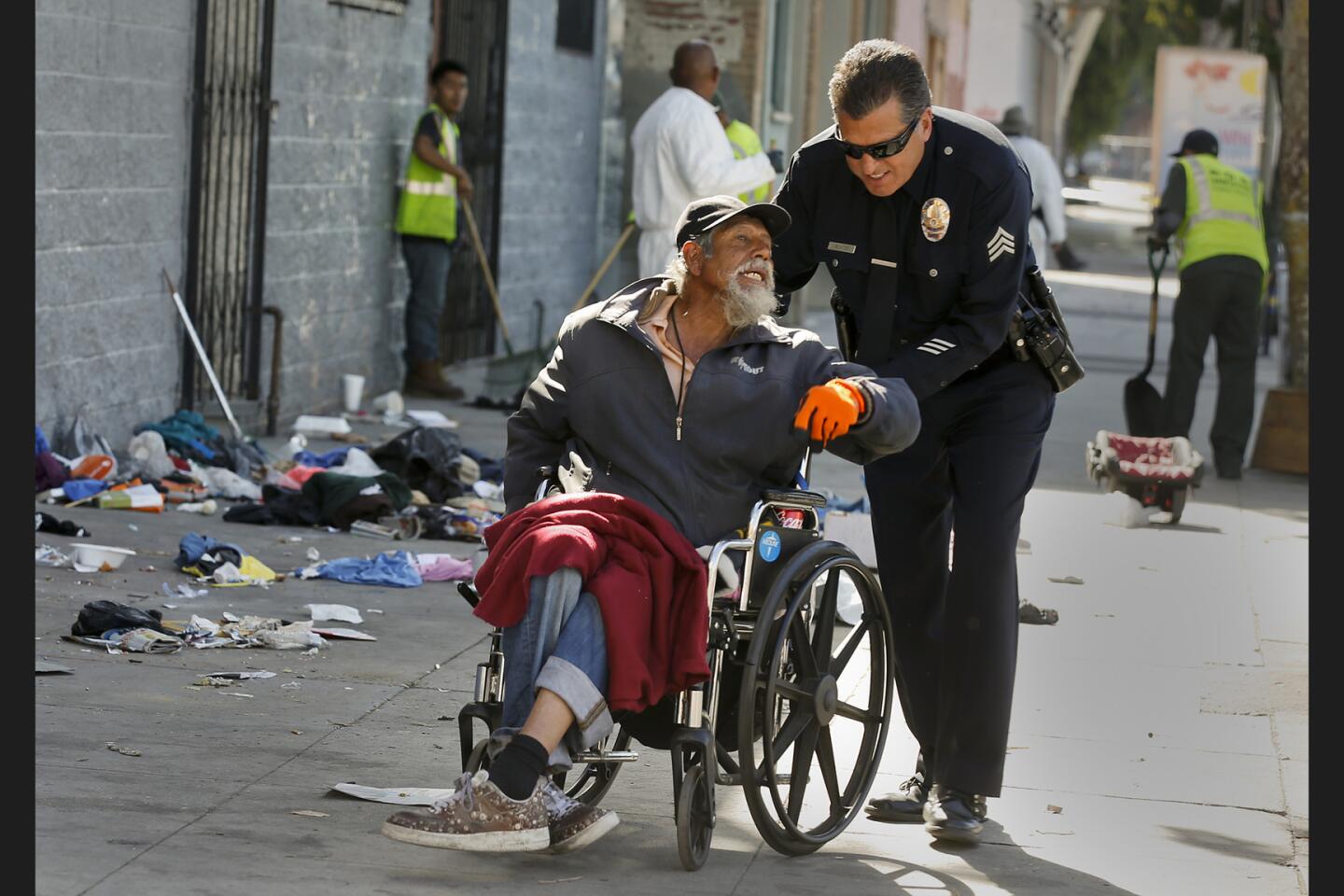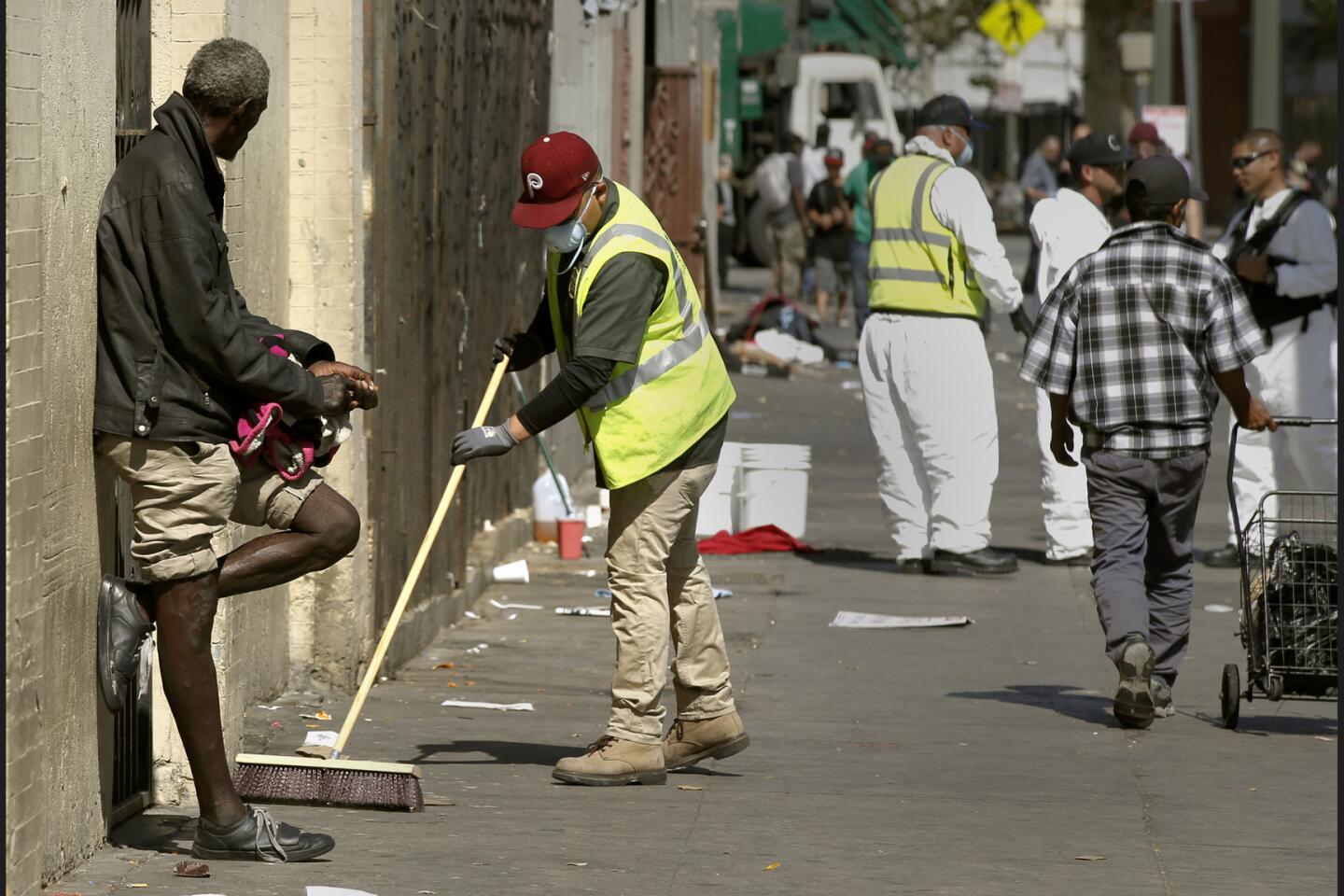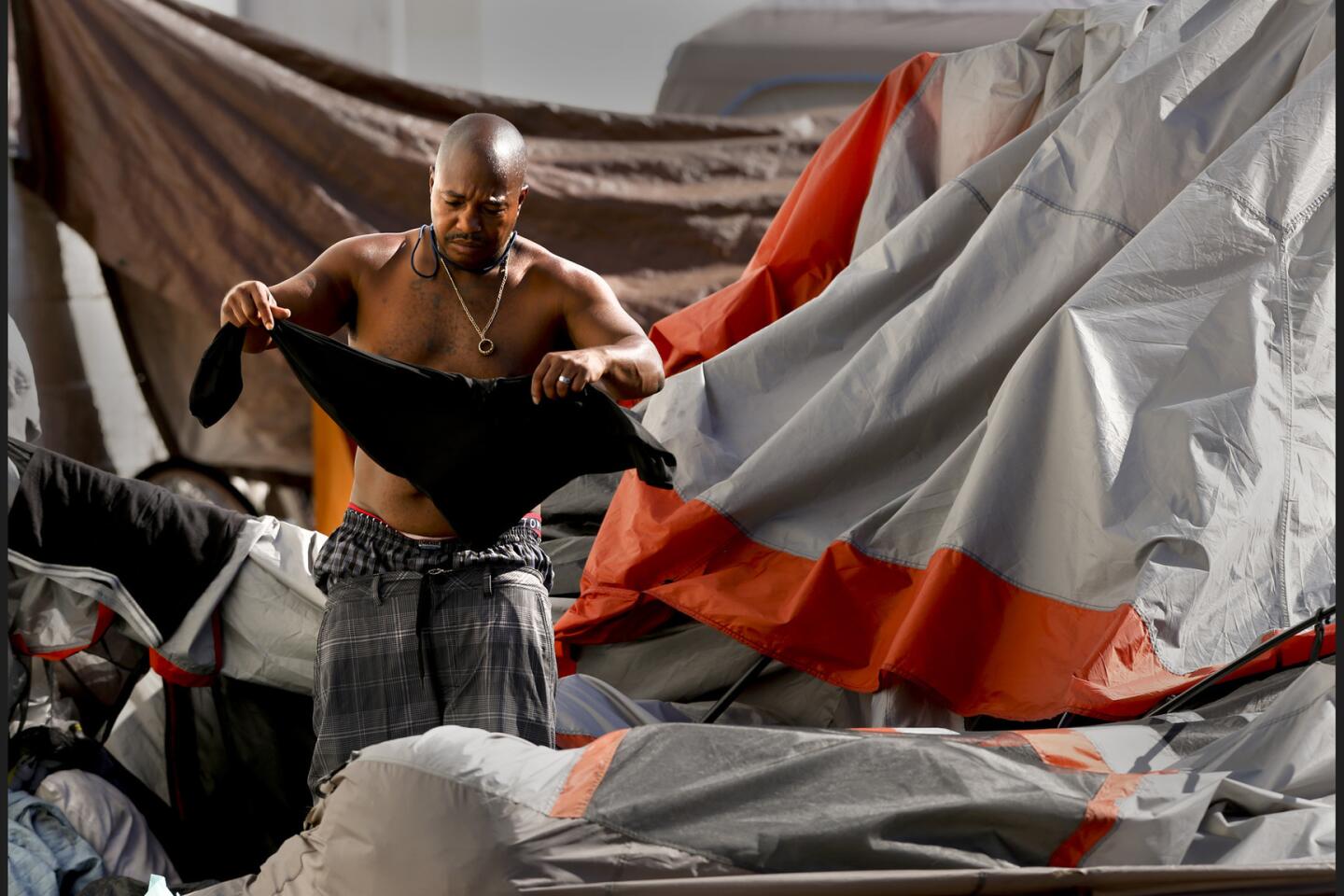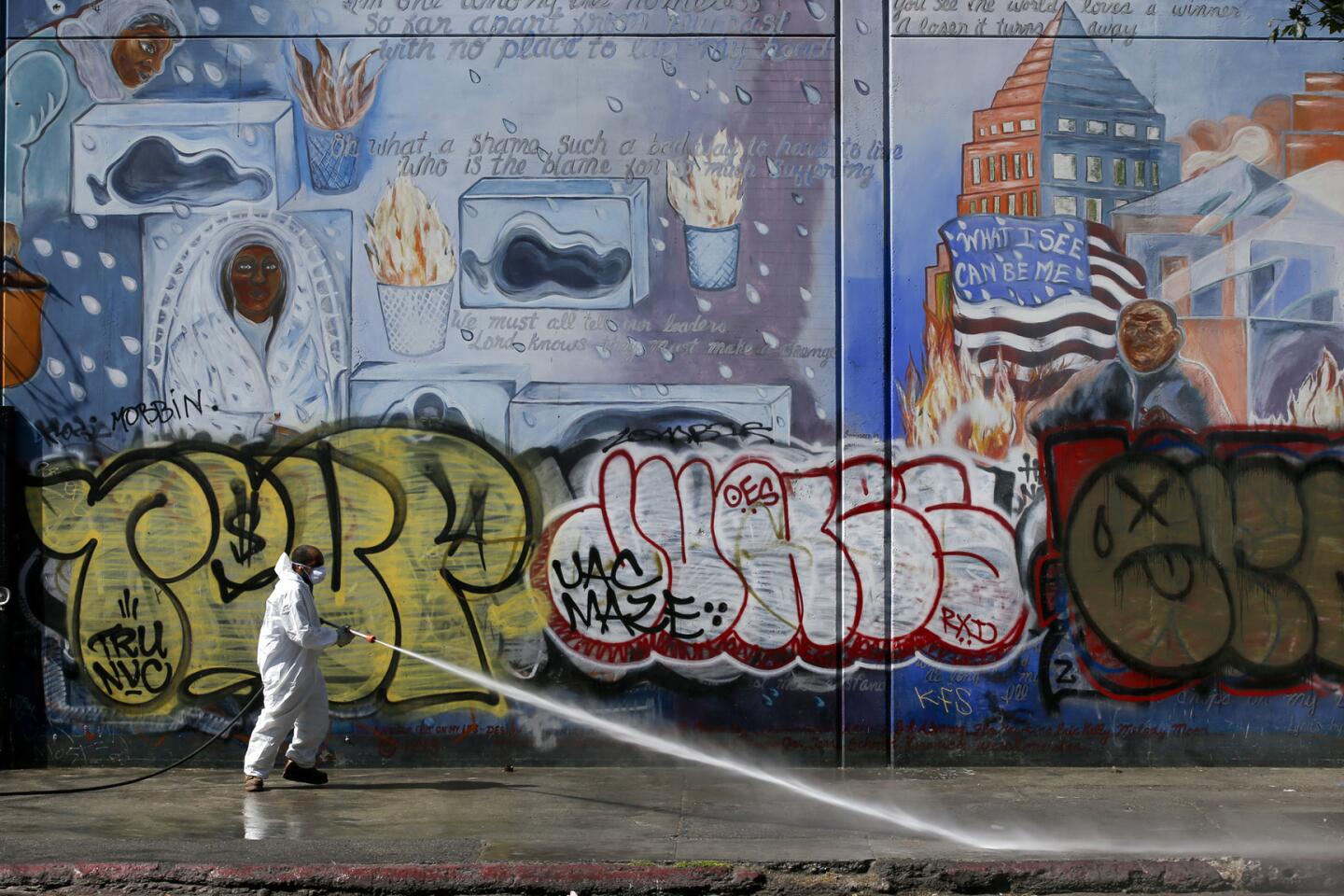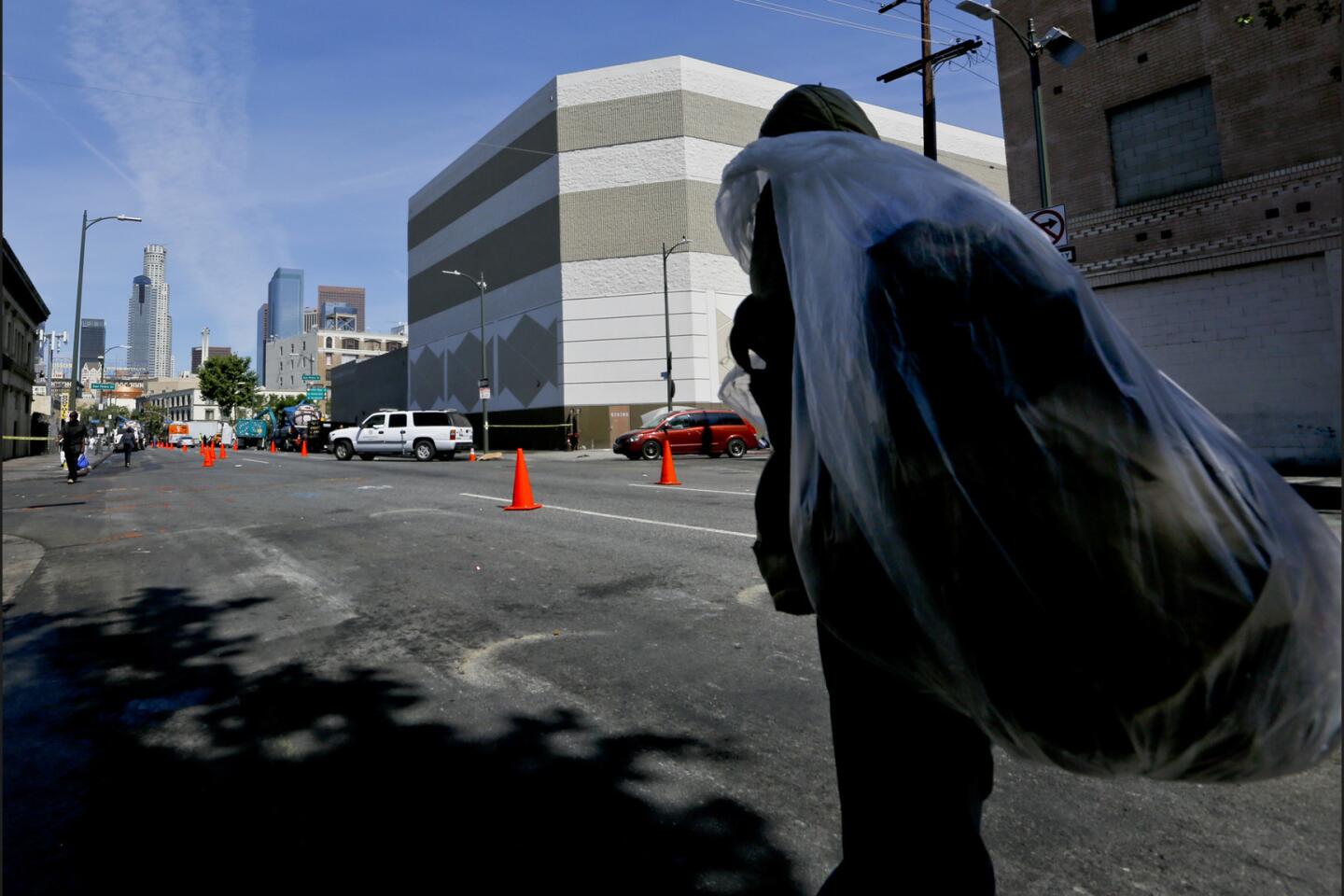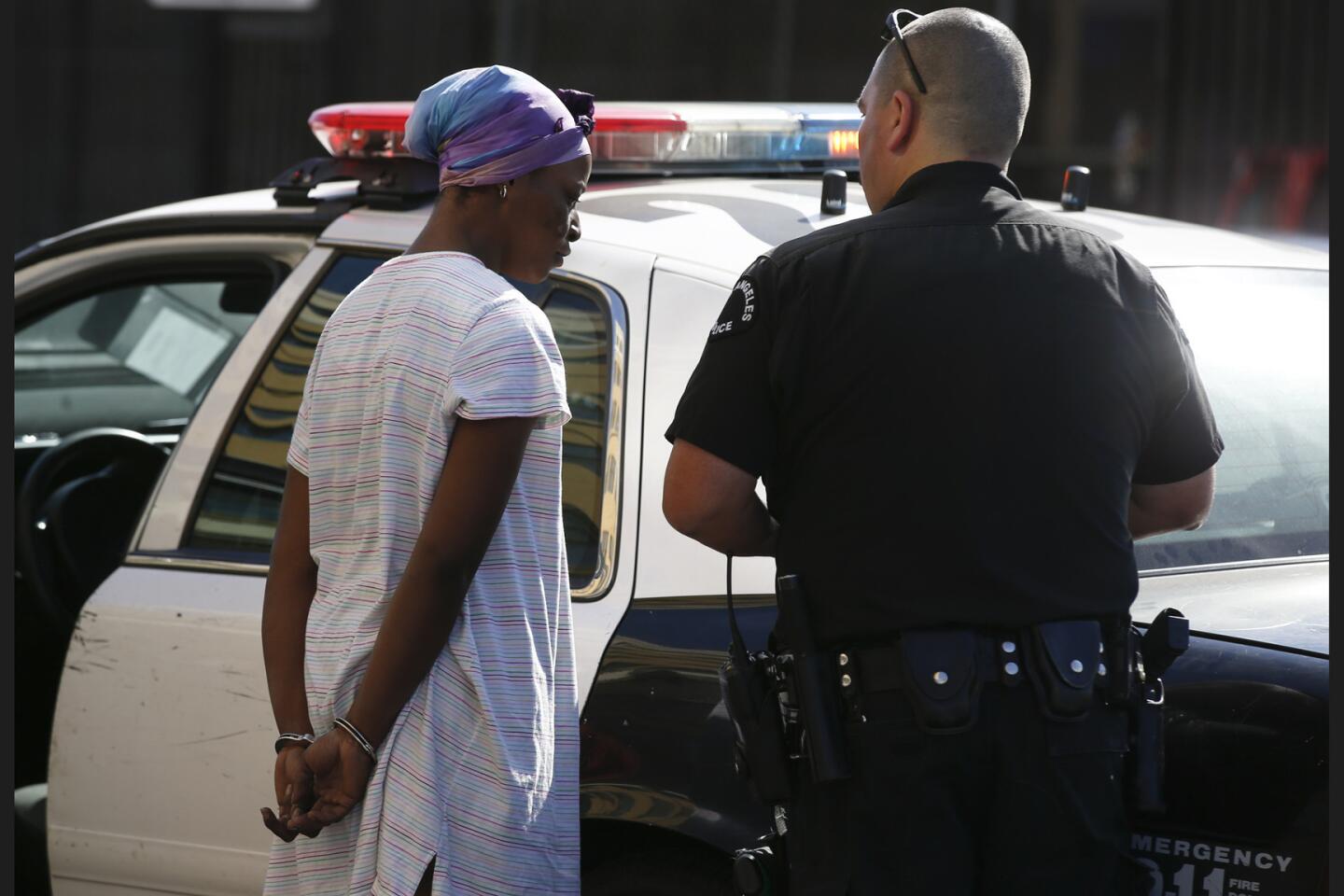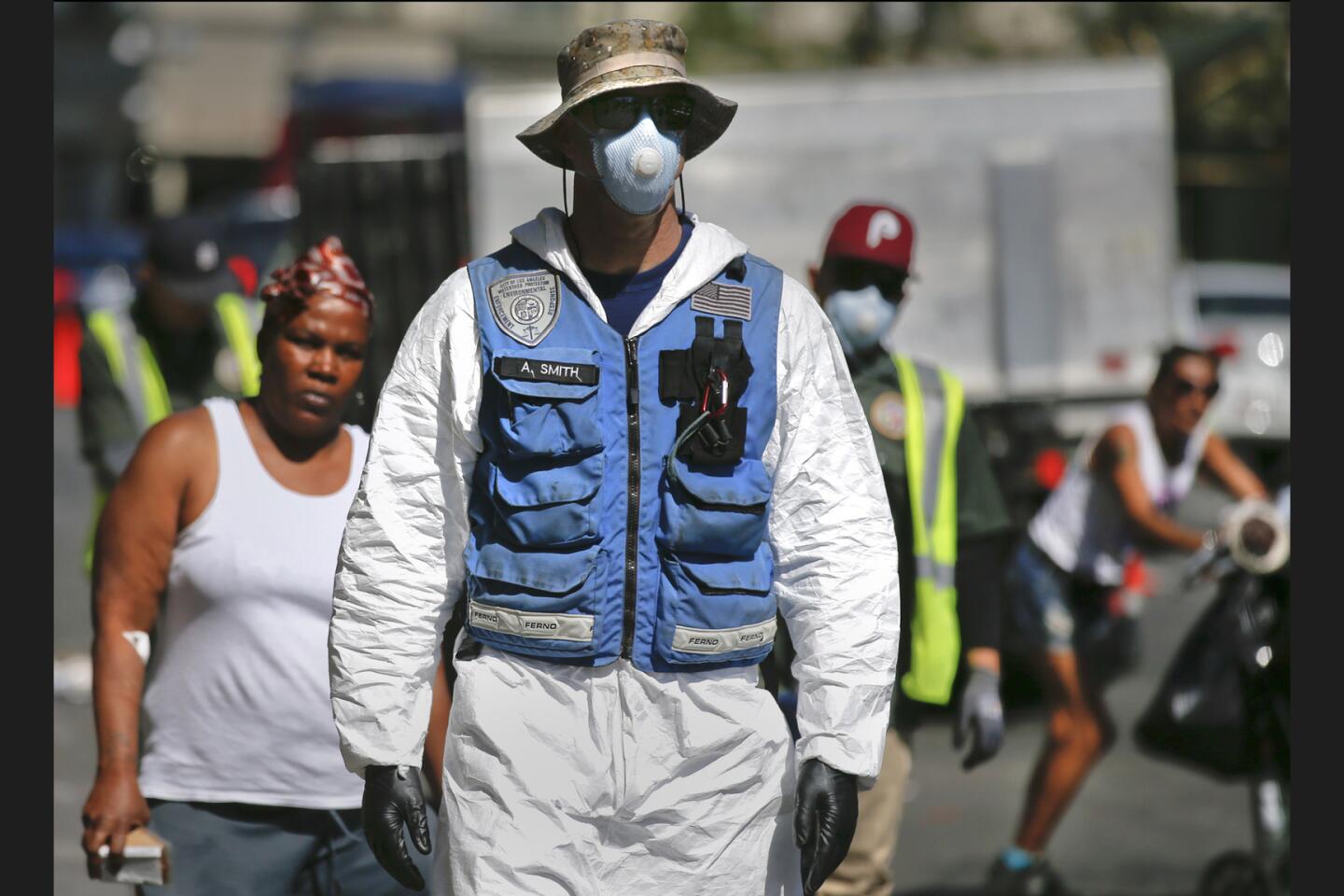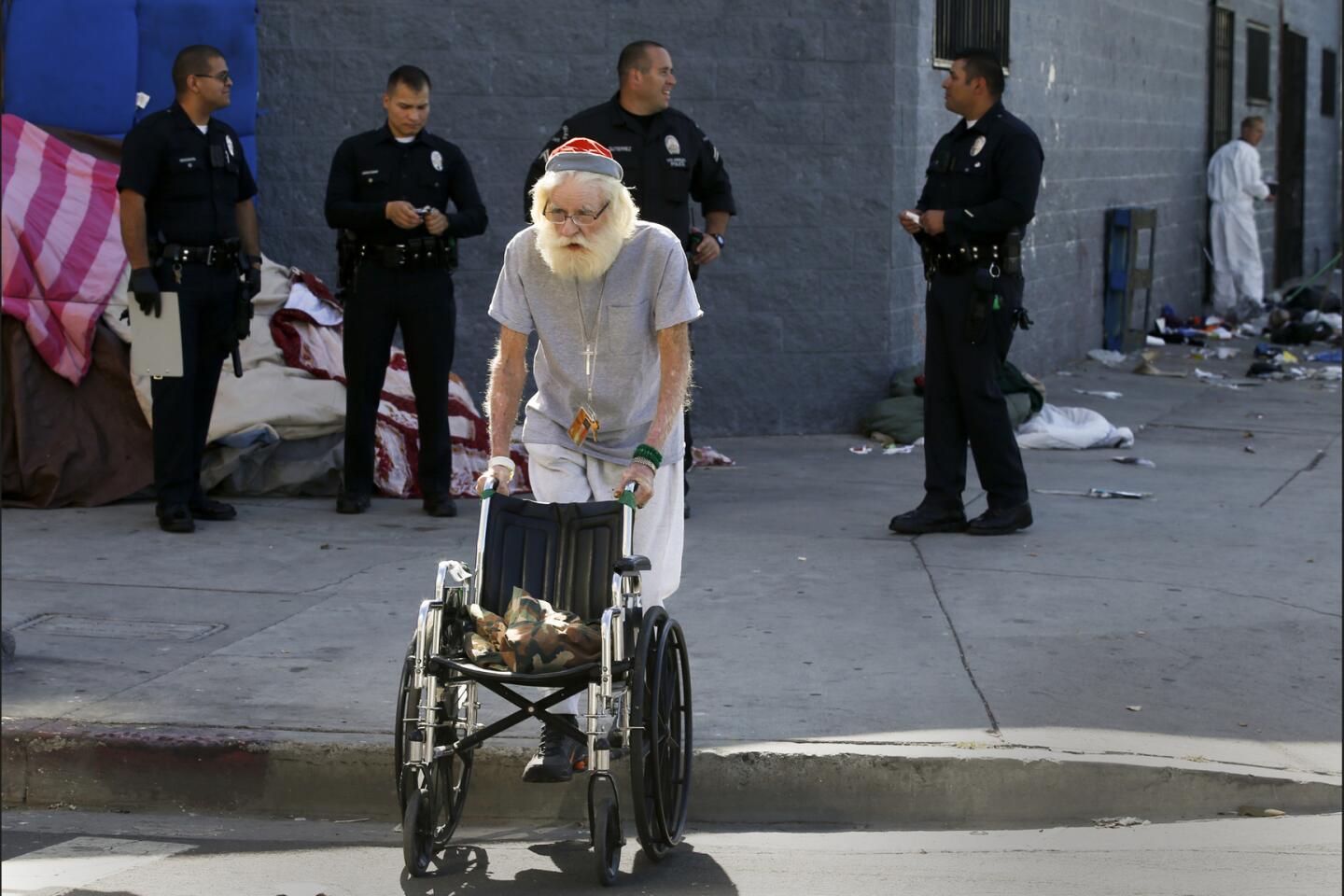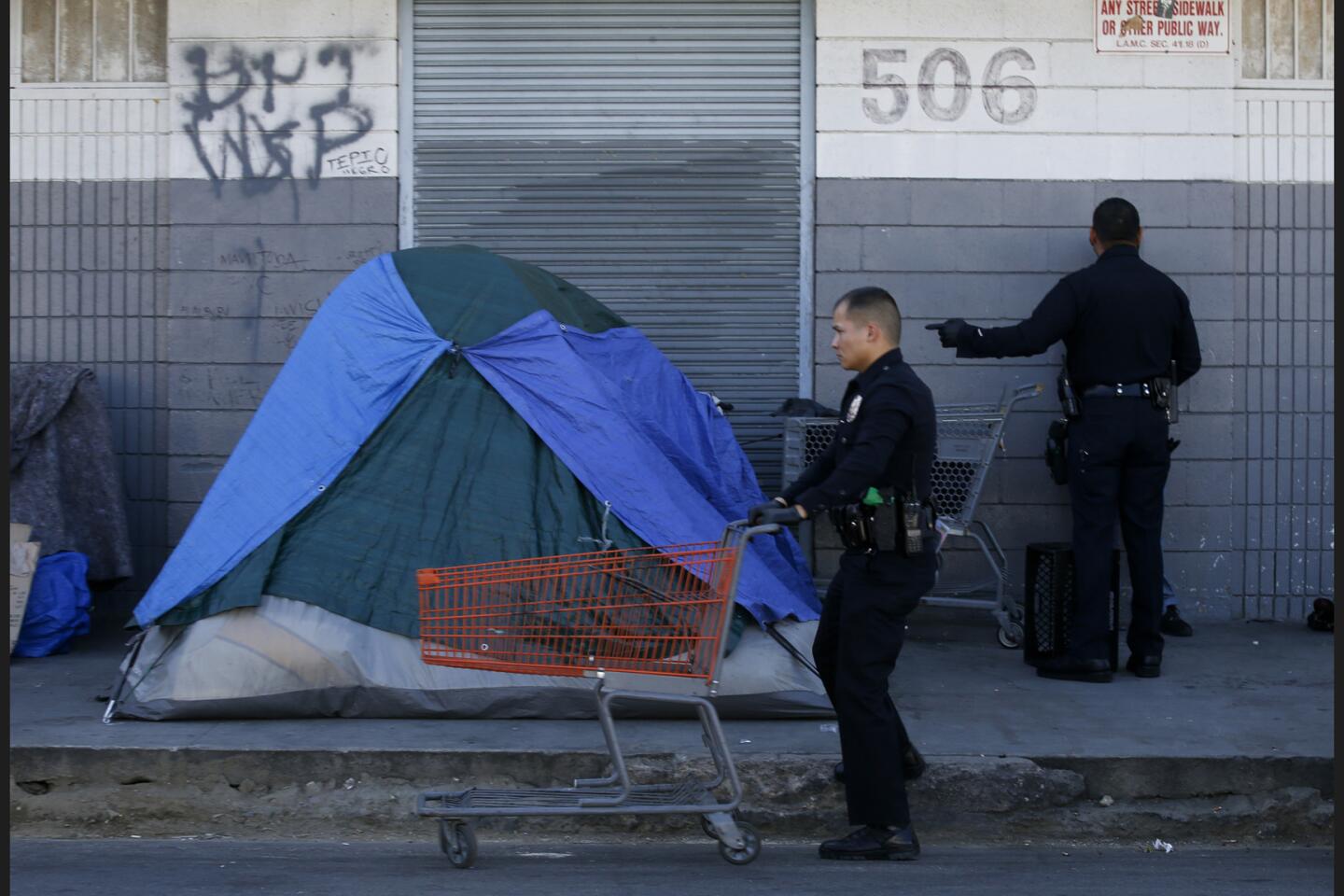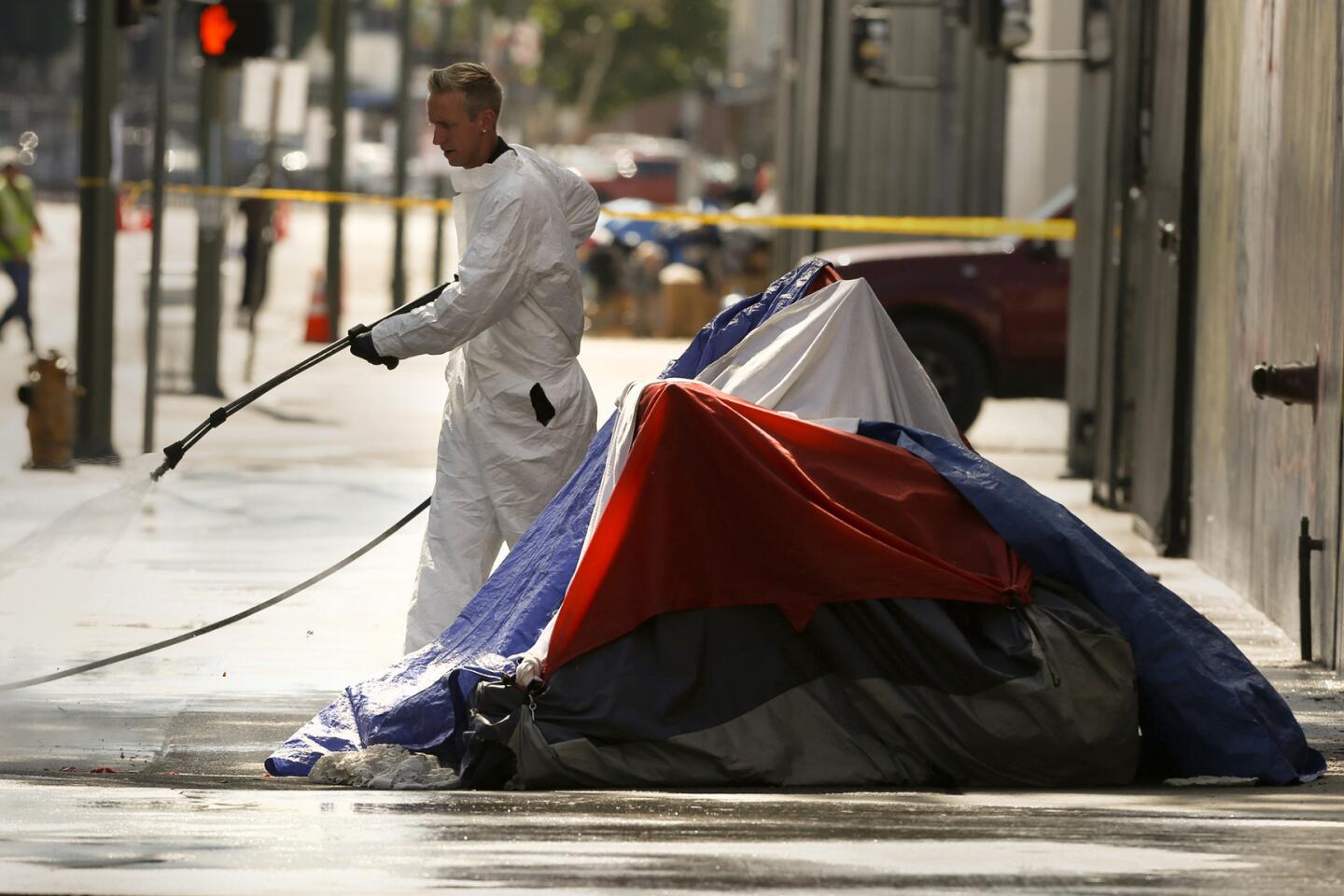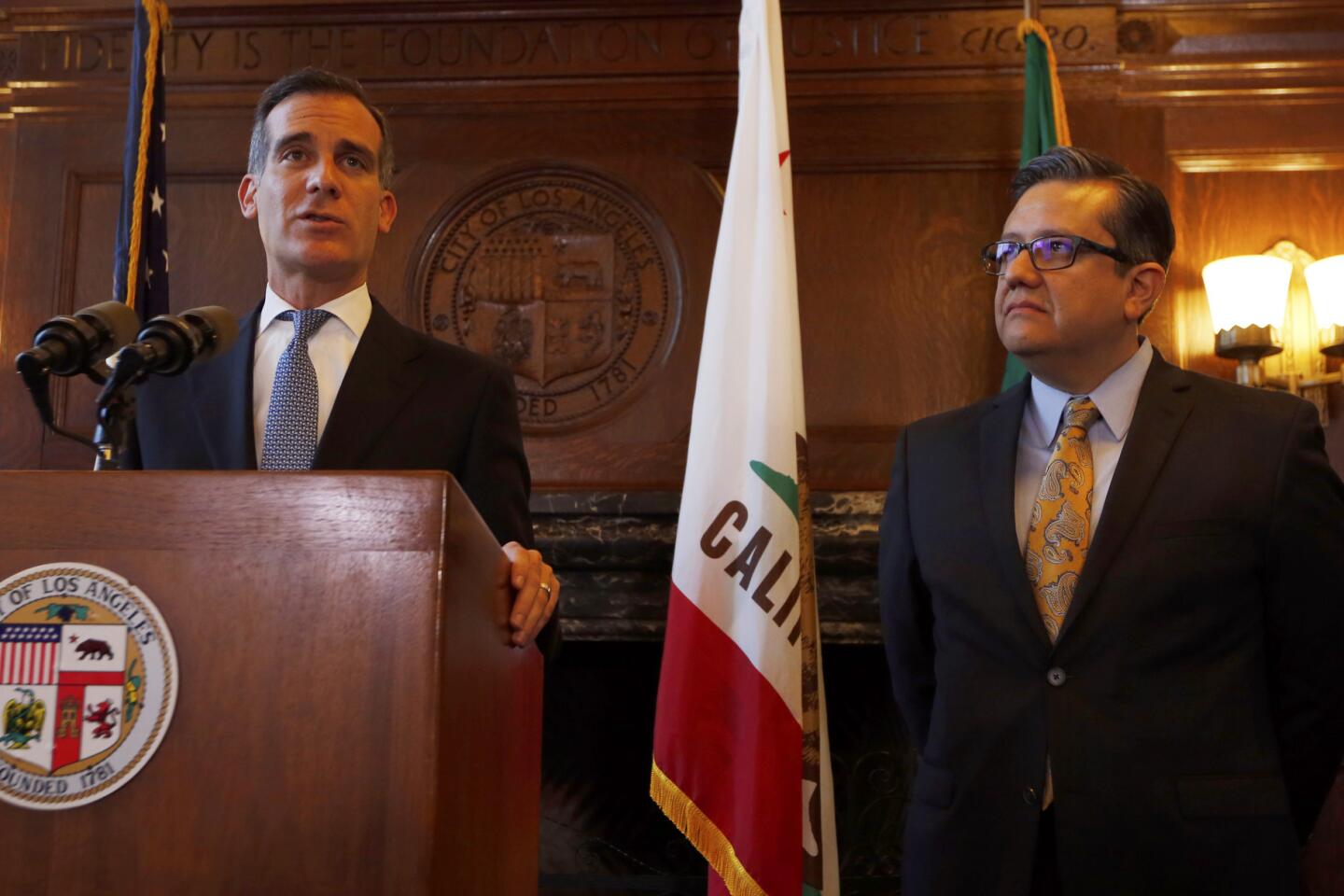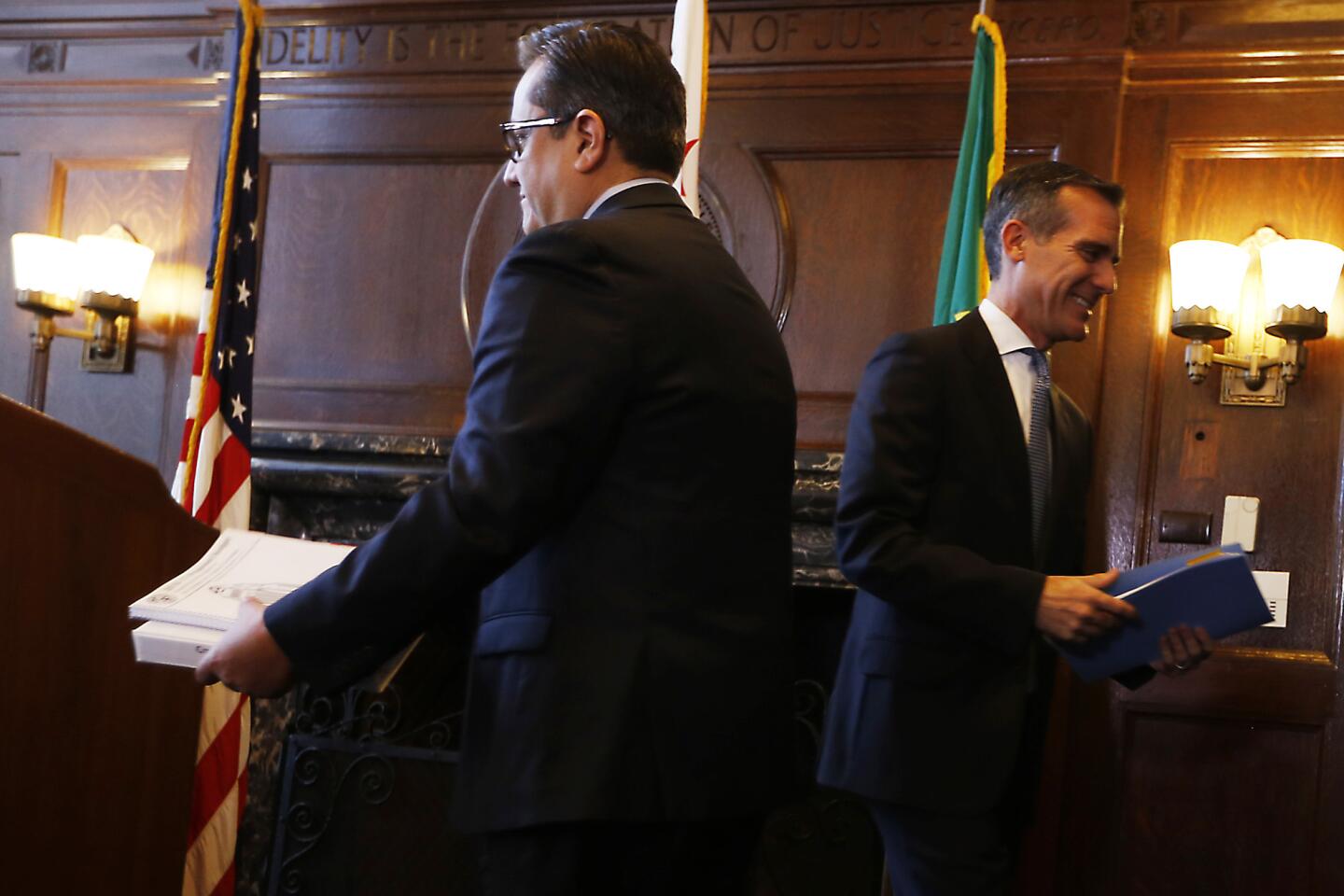Homeless measures take center stage in Mayor Garcetti’s 2016 budget proposal
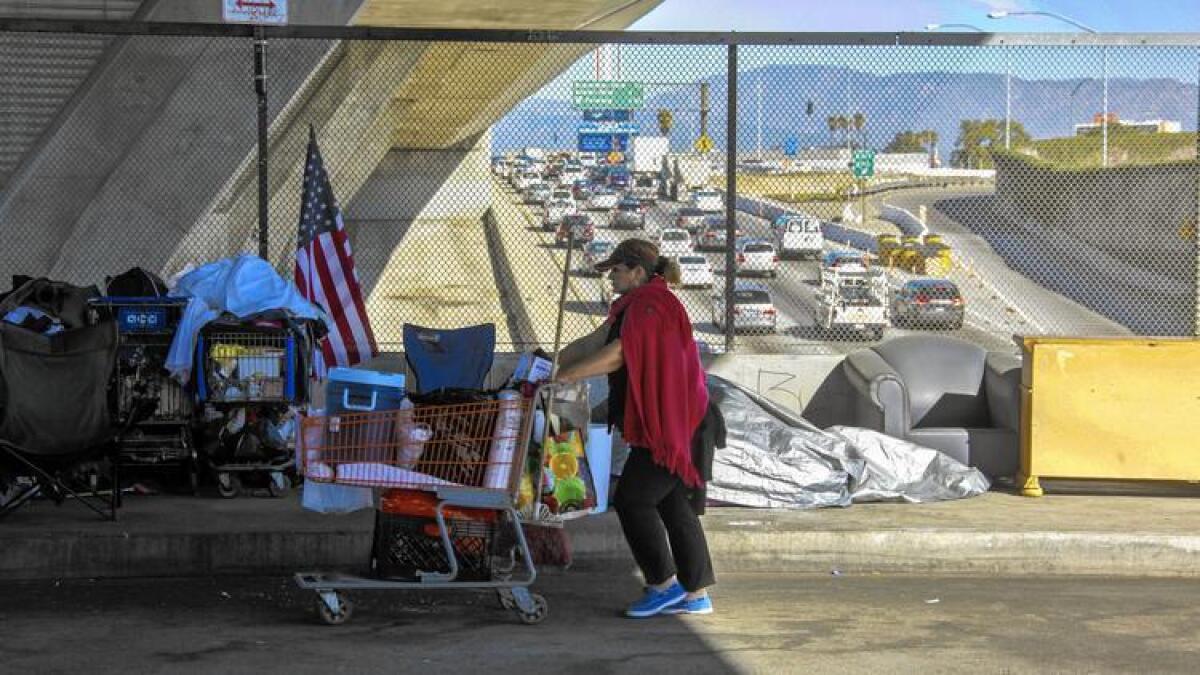
Los Angeles has adopted an ambitious 10-year plan to reduce homelessness but still lacks funding for many of its initiatives.
Los Angeles Mayor Eric Garcetti on Wednesday released his proposed budget for the final year of his first term, pushing for significant boosts to anti-homelessness programs as part of a 2% increase in overall spending.
The $8.76-billion budget proposal, up from $8.58 billion last year, asks for no radical changes to most areas of city government. It would slightly increase Los Angeles’ municipal workforce to just over 33,000 — still well below the pre-recession 37,000 — keeping the police force at its existing level and adding 100 Fire Department employees.
Homelessness, an issue whose political importance far outweighs the relatively small share of city dollars it consumes, will probably receive the most attention as the mayor and City Council hash out the final budget in the weeks ahead. The debate could be intensified by Garcetti’s novel approach to finding money to tackle the problem, which relies on at least one revenue source that does not yet exist and on offering up a number of prominent city properties for sale or development as low-income housing projects.
L.A. has long endured criticism that it doesn’t spend enough on its homeless population, which grew 12% over Garcetti’s first two years in office. The mayor’s staff is touting his proposed budget as a major step toward reversing that trend, saying it would provide $138 million for homeless programs during the next fiscal year, which begins July 1. That would represent a roughly fourfold increase from this fiscal year, when the city set aside $34 million for homeless programs — an initial outlay of $18 million and an interim appropriation of $16 million that the mayor ordered late last year.
At a news conference Wednesday, Garcetti said his proposed budget “commits unprecedented resources to help get Angelenos off of our streets.”
Tens of thousands of people are homeless in L.A., the nation’s largest homeless population without access to any kind of shelter. City officials have adopted a $2-billion plan to house them over the next decade and are planning to place a bond or tax measure on the ballot this fall that would provide funding for that effort beyond next year. Garcetti and some council members also have said they wish to provide at least $100 million from the city’s budget over the next year to jump-start the effort before asking voters for more money.
Philip Mangano, who served as homelessness policy czar for President George W. Bush, called the proposed jump in spending “a big step in the right direction.” He said Garcetti was joining other mayors, such as Bill de Blasio of New York City, in redirecting significant government resources to meet a rise in homelessness.
“They’re trying to put their resources where their rhetoric has been,” Mangano said. “It’s the delivery we’ve been waiting a long time for.”
In L.A., he added, “The budget demonstrates leadership on the issue.”
Others question whether the budget projections are realistic, noting that half of the mayor’s proposed homelessness spending depends on uncertain sources of revenue.
The suggested homelessness budget, for example, assumes $20 million in revenue from so-called “linkage fees” — a levy on real estate developers that can be used to build low-income housing. L.A., however, does not currently collect such fees. Garcetti has advocated doing so, and the city is studying how such a fee might be applied, but it will be months before a final proposal reaches the council.
An additional $47 million in the budget is expected revenue from selling city property or using it in partnerships with private developers to build low-income housing. Garcetti and City Administrative Officer Miguel Santana have identified eight unused, underused or vacant city properties for that purpose. Half of the sites are in affluent Westside neighborhoods that have rebelled against proposals for affordable housing projects.
Mark Ryavec, president of the Venice Stakeholders Assn., said that although residents of the neighborhoods surrounding some of the properties may be amenable to their sale, they could balk at new projects to house the homeless.
“These are phony numbers,” Ryavec said. “The mayor and the council continue to try to make the public think they’re doing something about this when they’re doing almost nothing.”
At Wednesday’s news conference, Garcetti insisted the projected revenue from the development or sale of city properties was not a “pie-in-the-sky” number.
“This is a very conservative estimate,” he said. “This is real. We talked to council members. They’re supportive in their own districts, and we know that this will move this year.”
Councilman Mike Bonin, whose Westside district includes four of the eight city properties targeted, said it was too early to speculate on what sorts of housing developments might be appropriate. Opposition to such projects can be less intense if they cater to residents with a mix of income levels rather than just the chronically homeless.
“My experience, particularly over the past two years, is that people are incredibly hungry for solutions to homelessness in Los Angeles,” said Bonin, who is a member of the council’s Budget and Finance Committee. “They’re clamoring for it. They don’t want encampments in front of their homes and their kids’ schools.”
The proposed budget now goes to the Budget and Finance Committee, which will review and modify it in the coming months. The full council must pass a budget by June 1.
[email protected]
[email protected]
ALSO
Santa Monica, awaiting the Expo Line’s launch, re-imagines itself as a model of mobility
‘The World’s Fastest Stoner’ does his part to blunt the lazy pot-smoker stereotype
Los Angeles, Bakersfield top list of worst air pollution in the nation
More to Read
Sign up for Essential California
The most important California stories and recommendations in your inbox every morning.
You may occasionally receive promotional content from the Los Angeles Times.
